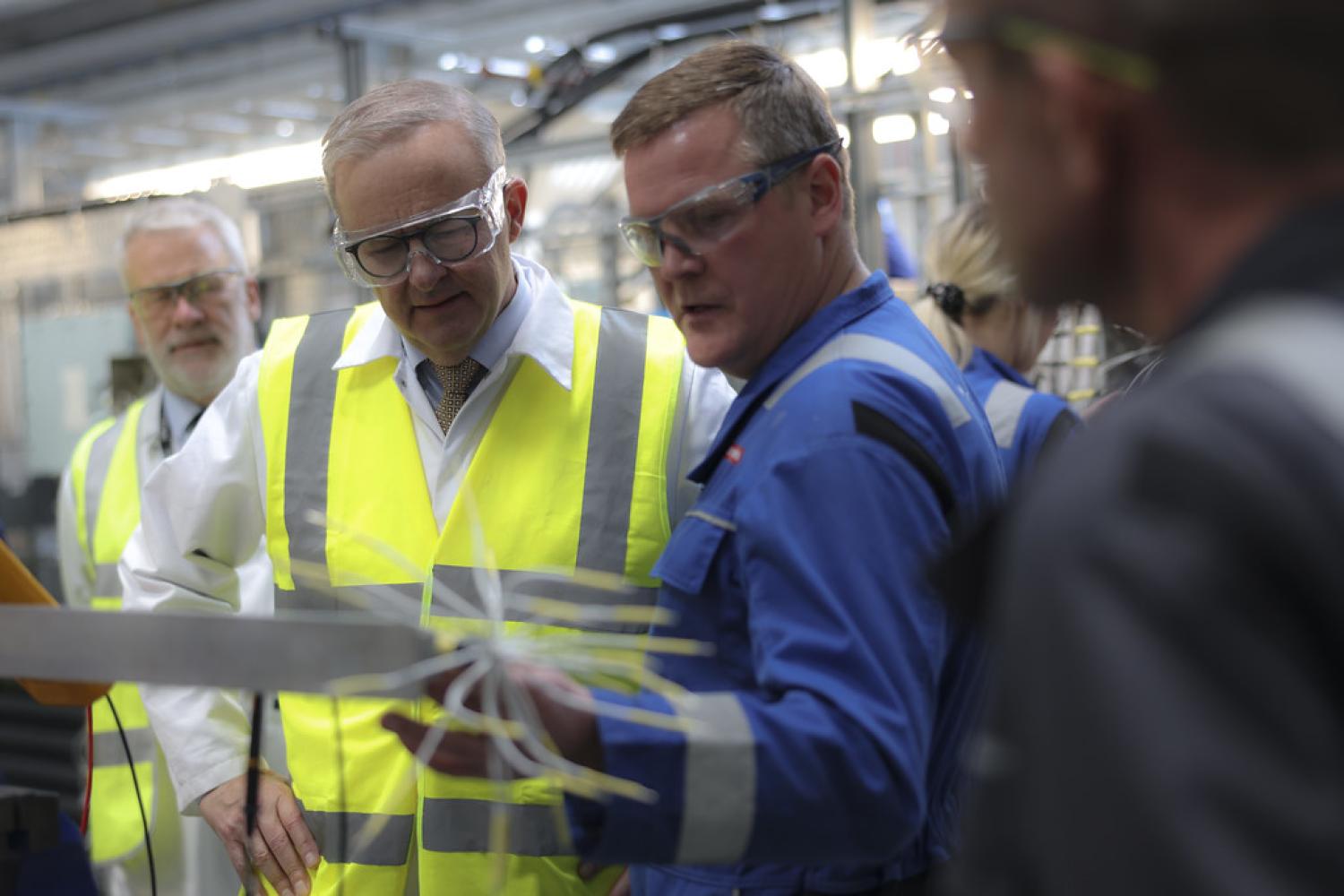The government’s response to the independent review of Australia’s surface combatant fleet is ambitious. When combined with the AUKUS agreement to obtain nuclear-powered submarines, it is the most significant peacetime build-up of military force in Australia’s history, and would firmly establish the Royal Australian Navy (RAN) among the leading second tier navies, alongside France and Britain. The timing is also ambitious - the plan relies on Australia acquiring ships at an unprecedented pace.
Another element of ambition is the drive for greater lethality. The requirement for the RAN to be better equipped to fight a peer adversary was a key theme of the Defence Strategic Review, and the Surface Fleet Review was specifically tasked with delivering this. The result is the cutting back of minor war vessels and their replacement with more capable but vastly more complex frigates and new large optionally crewed surface vessels (LOSVs).
The RAN and the government are going to have to take some pain to achieve their goals. The decision to have the first three of the new class of frigates built overseas is a positive step, but there will need to be further radical changes to how Australia acquires warships if this plan is to work. Navy is going to have to accept existing designs of new vessels and resist the urge to significantly “Australianise” them.
We are already seeing push-back against the decision to build the first vessels overseas, and pressure from industry and unions will only mount. It is essential that the government avoid adopting a “business as usual” approach to issues such as Australian industry content. The usual requirements for a large percentage of the material going into a ship to be Australian in origin is designed to support local industry. If done right this can be hugely beneficial, but it comes at considerable cost both in time and money. There may even be a need to shift more work overseas if workforce and other challenges cannot be met.
Beyond these shifts in approach to naval acquisition there are challenges in the development and integration of technology. The decision to acquire six LOSVs is a major gamble. This is a technology which does not currently exist, and for which the RAN does not have any detailed concept of operations. These challenges are well known, and it is indicative of the seriousness with which the government views the strategic situation that they are willing to take such risks. However, this comes on top of other risky projects, most notably AUKUS. Given the limits on Australian resources, the compounding nature of these risks needs to be acknowledged and carefully managed. This is likely to mean relying heavily on the US, which brings its own risks.
Perhaps the greatest challenge facing this project is the industrial workforce. There is to be a dramatic expansion of naval shipbuilding in Western Australia, with eight new frigates and six LOSVs to be built at Henderson. Yet, as the Australian National Audit Office recently reported, the industry is struggling to maintain a far smaller workforce there in the face of competition from the high paying resources sector.
The next few years is going to see a significant ramping up of workforce requirements to support the rotation of US and UK submarines through HMAS Sterling, and at the same time the shipyards are going to be expanding to build the new warships. There are already concerns that WA shipyards will steal critical personnel from those in South Australia, which are focused on building the Hunter Class frigates and AUKUS submarines.
The skilled workforce is simply not large enough to meet the ambition of the proposals and squaring that circle will be a major challenge for government. In the longer term, education, apprenticeships, and other incentives appear the best solution, but that is a slow process. Migration will also need to feature, but that will need careful management in terms of security, domestic politics, and relationships with allies and partners facing similar workforce pressures.
Finally, there is the challenge for the RAN of crewing these new vessels. The Defence Strategic Review described workforce as the "Navy’s biggest challenge" and there is a degree of irony in a massive expansion of the fleet coming at a time when the service is unable to crew the ships it has. A focus on recruitment is essential, but it is unlikely to be sufficient. The Navy has to think hard about how it can do business differently to free up personnel. There are rightly questions being raised over the ever-growing proportion of Navy personnel who are not at sea, but reversing this trend may merely exacerbate retention problems. Other radical options may include the creation of a coastguard or fleet auxiliary to tap into new pools of personnel and free up existing navy personnel.
The ambition of the RAN’s plans will leave many sceptical about the likelihood of success, especially given the torrid recent record. Now government, led by the Defence Minister, needs to take ownership of what must be a government-wide project.

